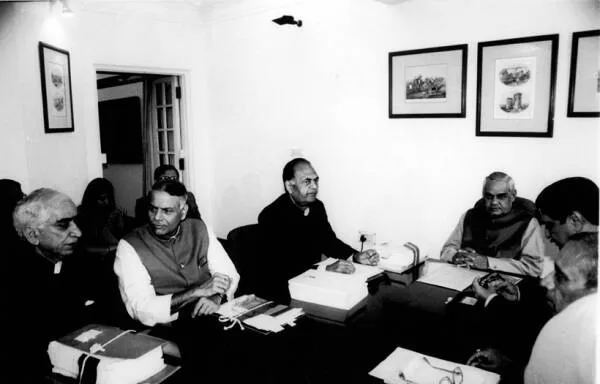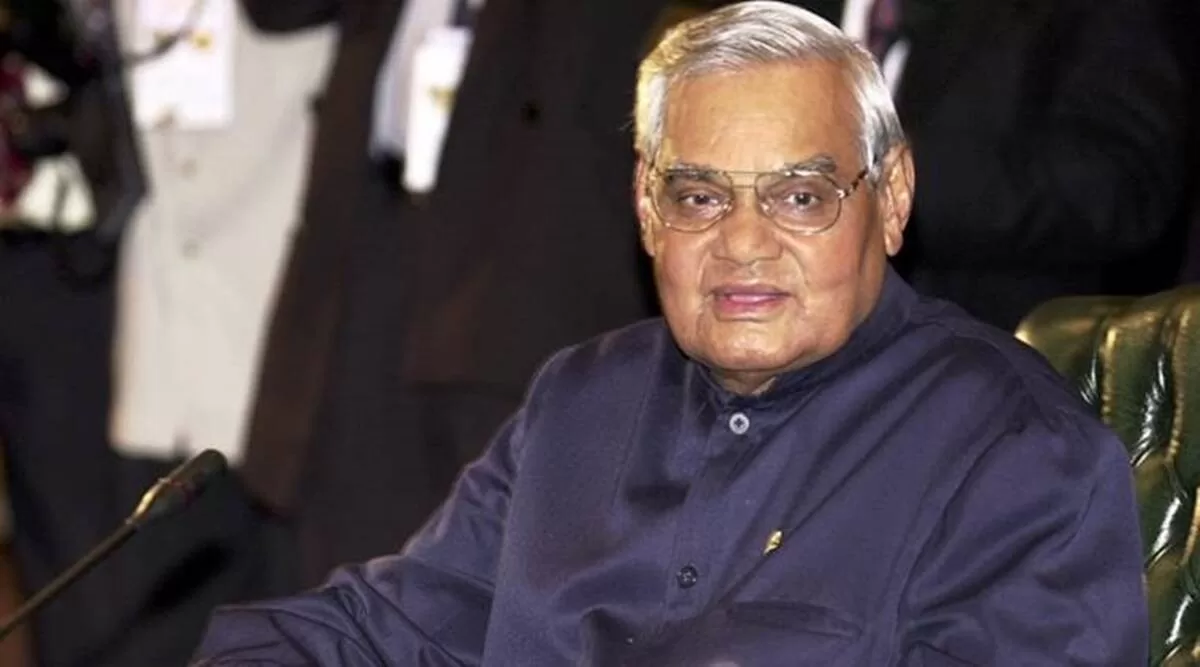In 1999, when the G20 consisting of the finance ministers and central bank governors was set up, India was elected its second chairman because Vajpayee’s India was held in high esteem globally. (Archive)
My chairmanship of G20 was a small piece of news in India as was my chairmanship of the development committee of the World Bank. In the Vajpayee government, we believed in working quietly, without much fanfare
Written by Yashwant Sinha
Updated: December 27, 2022 7:25:54 am
The G20 is in the news almost daily because India is now the chairman of the group. Earlier, nobody had heard of the group except those who were directly concerned with it. But has India become the chairman of the G20 for the first time? What exactly is the G20? My mind goes back to the autumn of 1999 when I was the Finance Minister of India and was visiting Washington DC to attend the meetings of the IMF and the World Bank. The meeting assumed special importance because, in 1997 and 1998, the world had witnessed yet another severe economic crisis, this time in East Asia. The economies in the region had collapsed one by one as a result of their follies. Naturally, it had an adverse impact on the global economy. Naturally, the concern it caused was also global. It was in this background that the G20 was formed in 1999.
The G7, consisting of the important developed countries, was already in existence. It also used to invite the Russian Federation to its meetings and was G8 for all practical purposes. But apart from the World Bank and the IMF, there was no other body at the international level where the developed and developing countries could come together and exchange ideas on global financial and economic issues. These were large and unwieldy bodies where everybody delivered her written speech and the job was done. The need for a more compact deliberative body was sorely felt. The initiative to form such a group was taken by the G7 during the 1999 autumn meeting of the IMF and the World Bank in Washington. I recall the events of that year vividly.
Paul Martin, the finance minister of Canada acting on behalf of the G7, invited me to a meeting in which he mentioned the idea that had already been discussed in the G7 to constitute a bigger and more representative group of finance ministers and central bank governors consisting of the G8 and some important emerging market countries to deliberate in depth upon the developing financial and economic global situation. He told me that India was naturally the first country in the group of emerging market countries he felt he should talk to. “Will India agree to become a member of the group?” he asked me. I replied in the affirmative and then we went on to discuss the names of the other countries to be included in the group and its mandate. Discussions with the others followed and the G20 came into existence in September 1999. Martin became its first chairman and the first meeting of the group was held in Berlin in the renovated Bundestag building in December 1999. I was elected the second chairman of the group a little later.
My chairmanship of the G20 was a small piece of news in the financial papers in India as was my chairmanship of the development committee of the World Bank. In the Vajpayee government, we believed in doing our work quietly without much fanfare. So, I was not much bothered about it — I was more concerned with the tasks that awaited me. But things change, don’t they?
The next meeting was to be held in Delhi in the autumn of 2001. But terrorists attacked the Twin Towers in New York and the venue of the meeting shifted to New York along with the meetings of the IMF and the World Bank to show the world’s solidarity with the US. The G20 finance ministers and central bank governors finally met in New Delhi in the autumn of 2002 under the chairmanship of Jaswant Singh, who had by then succeeded me as finance minister.

In 2008, in the wake of another global financial crisis, it was decided to raise the G20 to the summit level. Two tracks were created: One of the finance ministers and the central bank governors and the other of sherpas to tackle other issues like climate change. Another important decision taken was to divide the member countries into five groups to make it easier to select an annual chairman. Group one consists of Australia, Canada, Saudi Arabia and the US; group two of India, Russia, South Africa and Turkey; group three of Argentina, Brazil and Mexico; group four of France, Germany, Italy and the UK and group five of China, Indonesia, Japan and South Korea. The countries within the group decide which from amongst them will take over as chairman when it is the group’s turn. So far, all the members of group one, four and five have enjoyed the privilege of chairing the G20 on an annual basis. India from group two is the chairman for the year 2022-23, Brazil from group 3 will take over as chairman in 2024 and South Africa from group two will become chairman in 2025. This will complete one round of chairmanship for all members starting from the US in 2008 and ending with South Africa in 2025. India’s turn to head the group has actually come a little late and almost nine years after Narendra Modi took over as prime minister.
In India, now we do everything with an eye on elections. So, though it was not our turn, we tried our best to assume the chairmanship of the G20 in 2018, a pre-election year in India. But Argentina did not oblige India despite our best efforts as it was its turn to become chairman. But we have succeeded this time as 2023 is also a pre-election year and as is already evident, the Government of India is going to milk this opportunity to the fullest.
In 1999, when the G20 consisting of the finance ministers and central bank governors was set up, India was elected its second chairman because Vajpayee’s India was held in high esteem globally. But we did not make a song and dance about it. We went about our task quietly and in a business-like way. But that was under the first and a very different BJP prime minister. Today we have another BJP prime minister, but how the style of working has changed, how the whole world has changed.
So, fasten your seat belts. India is the chair of the G20.
The writer, a former Union minister, is vice-president, All-India Trinamool Congress
© The Indian Express (P) Ltd
